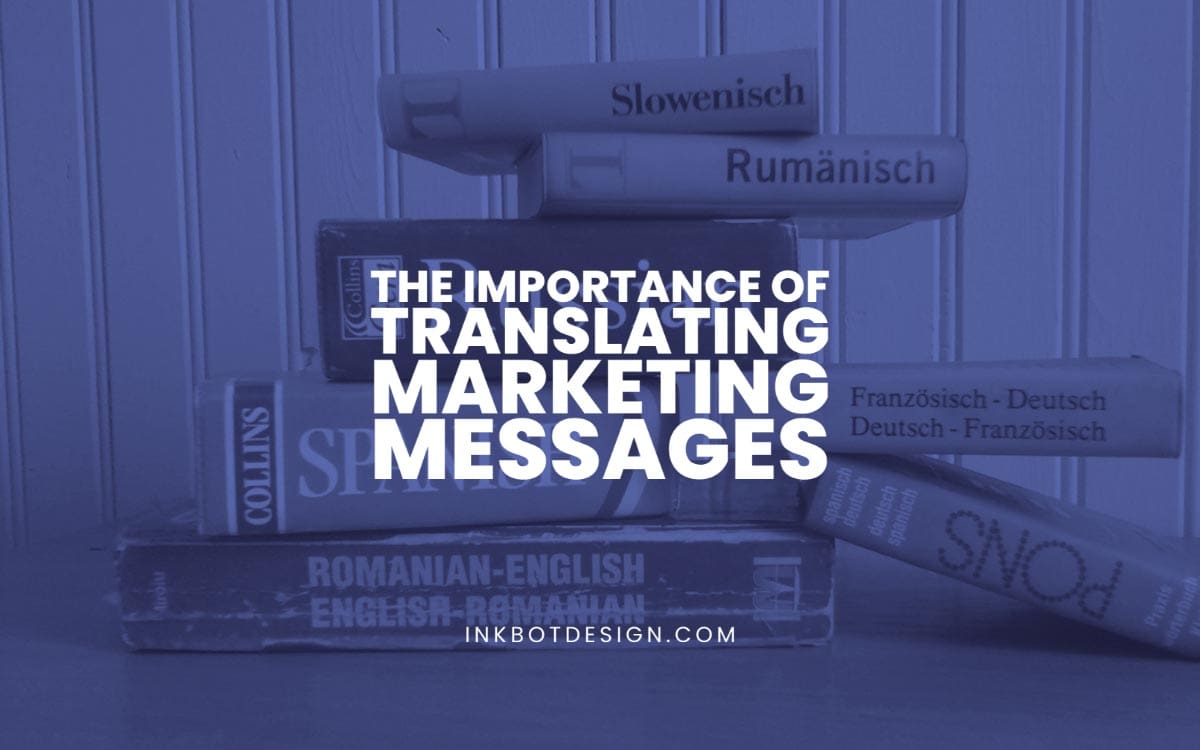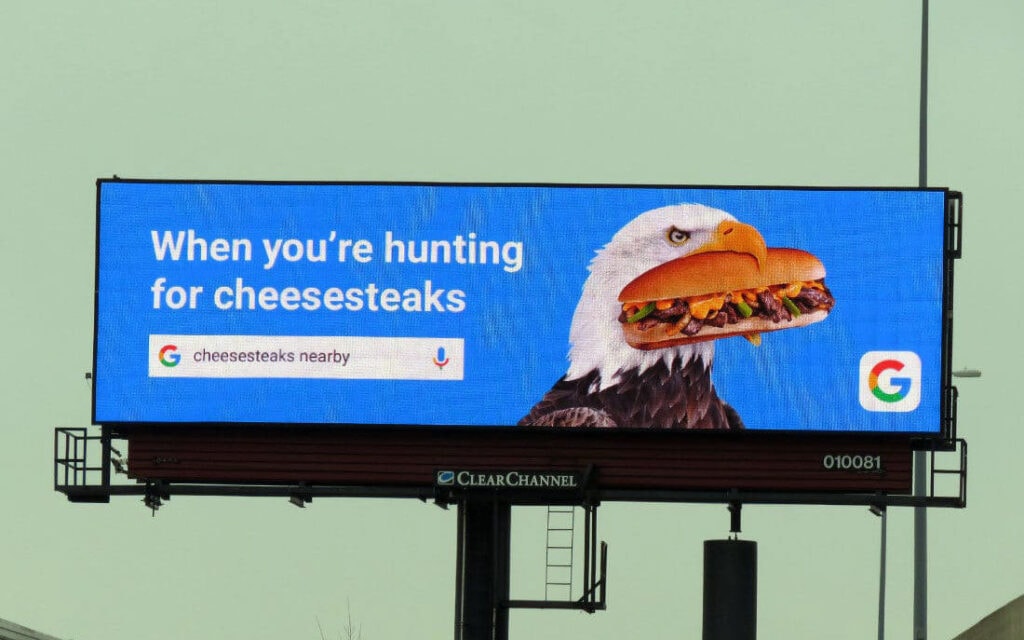
09 Apr The Importance of Translating Marketing Messages
The Importance of Translating Marketing Messages
Translating marketing content should be consistently a part of a marketing strategy across international borders.
Translating well can make your brand stand out in another country.
Meanwhile, poor translations will jeopardise your brand and break your launch in your target market.
Today, we’ll be looking at how you can level up your marketing content through translation.
We’ll show you how to translate advertising and marketing copy for effective launches in a foreign market. And, we’ll be giving examples of brands when their marketing messages worked (with a great ROI!) and when they didn’t.
What Goes Into Marketing Messages?
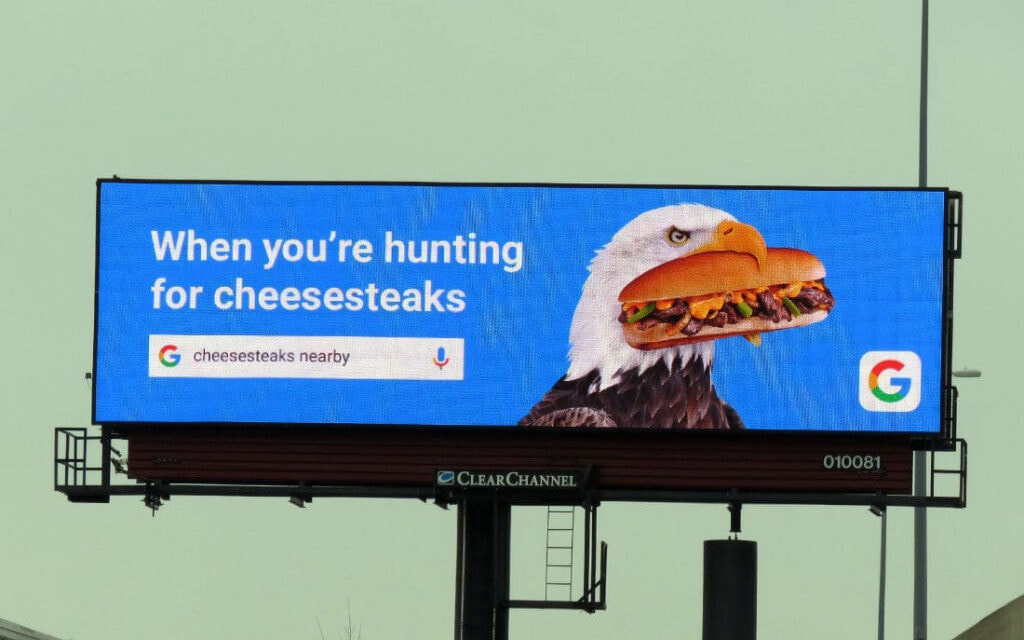
Before we translate marketing messages, we must first understand what these marketing messages are and how they can further the company.
A marketing message is any media that help influence customers to generate demand and build brand awareness that may eventually lead to sales.
In a foreign market, marketing messages are the first thing the target consumers of that market will know of your brand, written in their language.
Today, we’ll talk about different types of marketing messages and where they might go wrong.
A Mission and Value Proposition That Gives The Why of Businesses
A mission statement answers the question, “Why does our business exist?” It figures out the problem that the business is trying to solve.
The mission statement should state how the company is going to serve its customers and the public. It shows the whys rather than the hows, why a company is necessary to their niche, and the broader world.
For example, Sony’s mission statement is:
“At Sony, our mission is to be a company that inspires and fulfils your curiosity. Our unlimited passion for technology, content, and services, and relentless pursuit of innovation, drives us to deliver ground-breaking new excitement and entertainment in ways that only Sony can.”
From their mission statement, you can see that Sony is a brand that is passionate about what they do and endlessly searching for innovation. It stands in opposition to outdated thinking.
That’s why their appliances try always to be state-of-the-art. It also shows how this company will become a better society – through innovation.
In another example, Samsung’s mission statement is:
“We will devote our human resources and technology to create superior products and services, thereby contributing to a better global society.”
Short-and-sweet, Samsung is dedicated to providing the best products and services and better the worldwide society, just what a mission statement should be. Thus, they have become a household name around the world.
As a marketing message, the mission statement is hugely important. This is because it shows why the company exists at its current state now, rather than the vision statement, which shows how they envision the company’s future.
The mission statement shows how the company will change its consumers’ lives and better the world.
There is a wrong way to write mission statements, such as not mentioning what your company does, having typos in your mission statement, and being completely generic. There are some mission statements that don’t work well.
Mission statements (and vision statements) are usually written in the home language and do not change when expanding to another country. They are kept usually in their original state, and thus, rarely run into translation problems.
However, it is essential to think about the mission statement as you go into company slogans and other marketing campaigns, which run the risk of being misinterpreted.
Mission statements are the building blocks of any business, stating how they will proceed from the ground up.
Company Slogans That Still Work Internationally

Company slogans are everywhere.
From Nike’s “Just Do It” to Apple’s “Think Different” to De Beer’s “A Diamond Is Forever,” company slogans are memorable and distinctive and show the company’s values in such short, clever phrases.
However, when expanding into a foreign market, this advertising copy can get very lost in translation. It can end up costing millions of dollars for companies in sales revenue, as well as a hit to their brand reputation.
Why? Because they didn’t take into consideration the socio-historical and political values of the target market; they didn’t have a clear understanding of the language, or they made a mistake in direct translation;
When Pepsi translated their slogan, “Come alive with Pepsi,” they used a simple translation that ended up reading “Pepsi brings your ancestors back from the dead.” Since the Chinese culture is heavily reliant on respecting ancestors, this was a cultural insult.
In another example, American Airlines used “Fly in Leather” as their slogan for the Mexican market, which flopped because the Spanish translation read “Fly Naked.” Inappropriate and rude, no one wanted to fly at American Airlines.
In China, KFC’s slogan “finger-licking good” meant to “eat your fingers off,” which was also rude to their very own customers.
In a classic story of slogan gone wrong, American Dairy Association turned “Got Milk” into a Spanish version of “Are you lactating?” which was hilarious and detrimental to sales in Spanish-speaking countries.
These mistakes often take the form of word-for-word translations and simplified versions of what the company’s slogan is. They are rarely transcreated, which leads to mistakes.
Branding Messages of Products Tailored To That Country
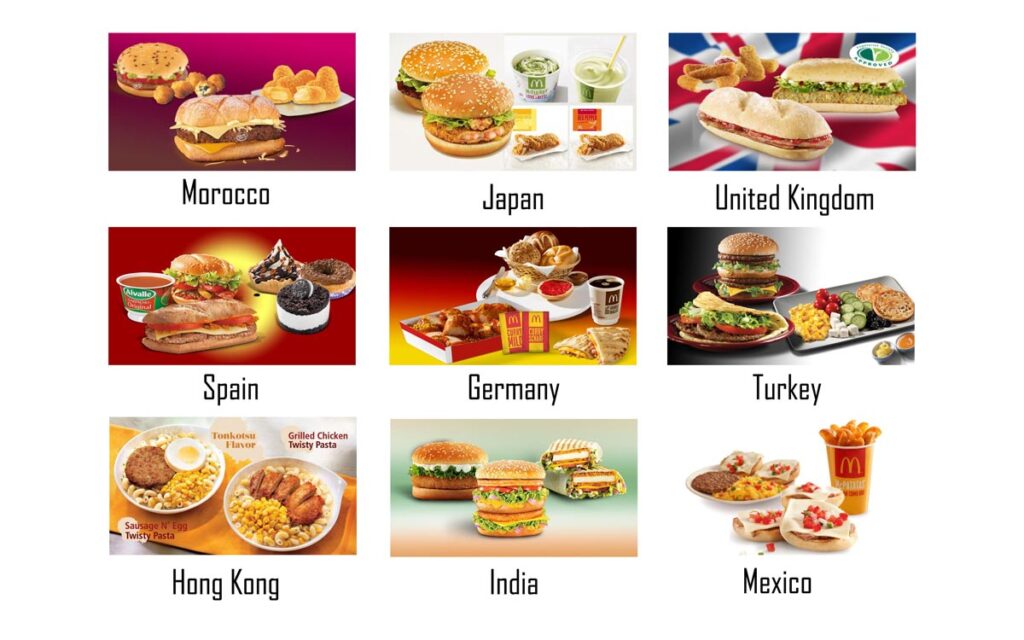
If you have a diverse product inventory and are marketing your product only in certain countries, you’ll need to develop messages to launch that particular product in that target market.
So many product launches have turned out to be a direct result of bad translations, turning these brilliant products into causes for laughter, at best, or cultural offences, at worst.
When expanding into a foreign market, the company must translate everything into major languages that that market can understand.
Some also choose to diversify their product inventory to add specific products for that country.
McDonald’s, for example, has a different menu in India than they do in France. They make sure to incorporate local cuisines and tastes into their menus, to the point where sometimes you think McDonald’s is a local brand rather than a global corporation.
But McDonald’s can also go wrong. When McDonald’s launched the famous Big Mac in France, it translated the name “Big Mac” to “Gros Mec,” which means “big pimp” in French slang.
Not the meaning they were going for. French sales of the burger became much less than was initially expected. (Furthermore, McDonald’s lost the rights to the “Big Mac” name to an Irish franchise “Super Mac.”)
In another example, Clairol launched their product, a curling iron named “Mist Stick”, for their German market. When understood in German slang, “mist” was translated to “manure,” turning out to “manure stick,” which is not fitting to use as a hair product, creating not-so-great results for the company.
While the curling iron was a hit in the states, it didn’t sell in Germany. Coupled with that, Rolls-Royce was also forced to change their Silver Mist car into Silver Shadow due to the difficulty of translating the word “mist.”
The branding of a product, or the brand name, is enormous since the name shows your impact on an audience creatively.
However, if you’re expanding to a different country, your translation of the branding message can make or break the brand.
It can make it if it translates roughly similar to the name you’re going for. Or, it can break it if you’re stuck with a word-for-word translation of this straightforward message. Therefore:
- Research your target audience and regional language
- Transcreate your product name instead of direct translation
- If needed, change the branding to a more appropriate one
When done right, translated or transcreated brand or product names can create more considerable brand awareness in the international sphere.
When done wrong, it leads to losses in revenue and damages brand loyalty.
Translating Ads With Effectiveness and Clarity
Creating ad copy is probably one of the most creative parts of marketing. It’s all about ads, if you notice when you go to the supermarket or when you watch a live stream.
Ads proliferate, and we are noticing them. Think about it next time you order dinner out or buy a new phone = how often we’re tempted to consume.
And how? Through ads.
On the business side, you can promote your business through marketing and advertising. You can promote your own website, too.
But when you’re going into another market, you’ll need to translate the message you’re advertising.
The translation process includes not just text but also visual and audio. Translating your ads leads to a deeper understanding of the target culture, such as subtitling, video work, and more incredible desktop and design skills.
Remember, not only can you offend in text, but in symbols and imagery, as well.
Things to remember when you’re about to translate ads:
- Context – This includes cultural and socio-and-historical context and the target market’s popular culture since the company will hopefully become a huge part of that market if all goes well. It would help if you also thought about the linguistic context, the cultural context, and your advertisement’s rhetorical context, such as how best to advertise a car in a country where roads are winding and dangerous.
- Current Events – You should gauge the political and current climate of where you will be advertising, such as the laws that may hinder or promote the messages. One example of this is targeted Brexit ads.
- Research and Data – You should take a look at data privacy laws, too, for countries where the internet is restrictive, for example. Researching the various channels where your advertisements will be placed is important, too – for some countries, video content is more popular than blogs, and vice versa.
Prime examples of advertisements that gave the wrong marketing impression:
Nokia, in their heyday, launched their “Lumia” phones in Spanish-speaking countries, which led to poor results. This is because the word “Lumia” translates to “prostitute” in Spanish, which was inappropriate.
In another example, Paxam, an Iranian company, translated their Farsi laundry soap advertisement to “snow,” but a mistranslation read “vomit.”
Aside from slogans, advertisements such as signs and symbols everywhere in the world can be mistranslated, such as these:
- In a Swiss menu: “Our wines leave you nothing to hope for.”
- In a Korean restaurant: “We do not re-use the food.”
- In a war museum in Thailand: “The Museum is building now — sorry for the visitor.”
- In a dentist’s office: “Teeth extracted by the latest Methodists.”
- On a Japanese sign: “Stop: Drive Sideways.”
To avoid many of these misunderstandings and mistranslation, it is essential to either hire freelance translators, hire translation services, or make your translation team.
Translation Services As One Way to Convey Marketing Messages In Another Language
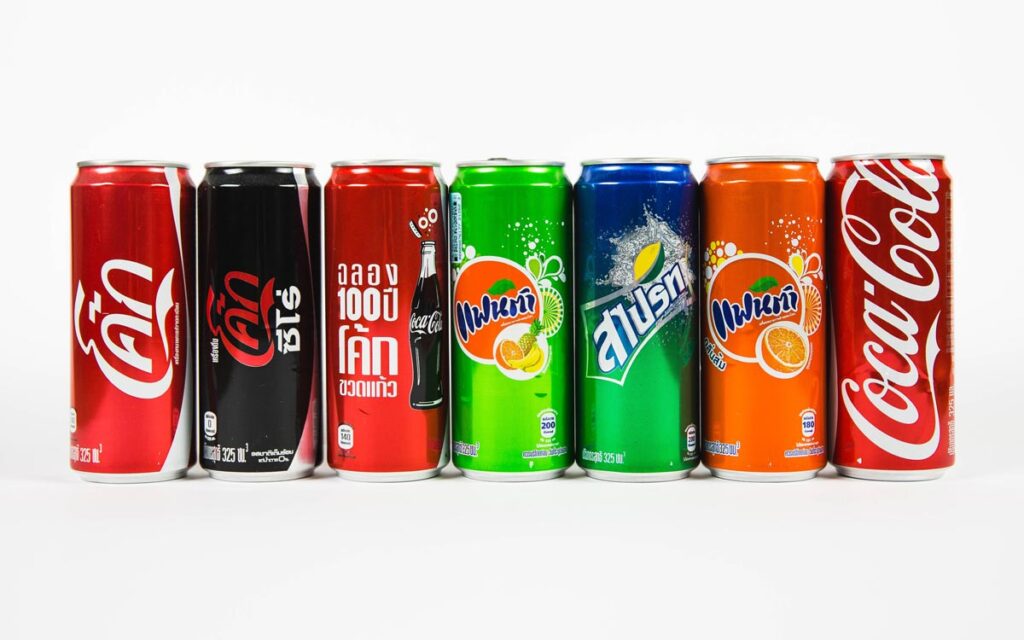
If this article has stressed anything, the correct translation matters, and the wrong translation leads to losses.
You can do this in two ways: hiring an in-house team for your translation needs or outsourcing to translation services, which can bring quality, accuracy, and value to your target language needs, leading to fewer mistakes.
Another option would be to hire freelance translators to suit your needs.
Whether in-house, translation services or freelance translators are doing the job, you can select the most suitable by budget, time, and expertise.
If you’re looking for a more hands-on project, you can opt for an in-house team. If you’re looking for expertise, translation services already have a long history of working on translation projects. If you’re looking to cut costs, freelancers are the best option.
Whichever you prefer, your brand can make sure to look for the right marketing message for your target audience.
Marketing messages such as branding and advertising copy are challenging to navigate in other countries and often go wrong.
We’ve noted many examples of how it went wrong in this article, but it’s easy to spot when it does go right, too.
Just take a walk down the street or watch a movie on YouTube. Notice when you are captivated by an ad or a billboard. Those are perfect examples of when marketing messages start doing their work.
Key Take-Aways
- Do not translate word-for-word or directly. Instead, transcreate. Through this, you can translate based on concepts or ideas rather than word for word. It considers different grammatical structures from language to language, cultural nuances, and varied ideological concepts that cannot be thoroughly explained directly. This process leaves room for creativity, which is needed for slogans or product names and is more accurate in translating marketing messages than a direct translation.
- Be mindful of nuances in language. A language is not static – it’s constantly changing. Slang terminology, differences in dialects, regional differences in language must be considered when translating marketing messages. As we’ve seen with examples of other brands that could not foresee how their marketing messages may differ regarding region and language, we can learn from other brands examples of what not to do regarding mistranslation.
- Sincerely connect with your consumers. Know your customers, their problems, and possible solutions to these problems. As we’ve found in the section about mission statements, your company should fill a void in society that directly affects and solves your niche market’s problems.
